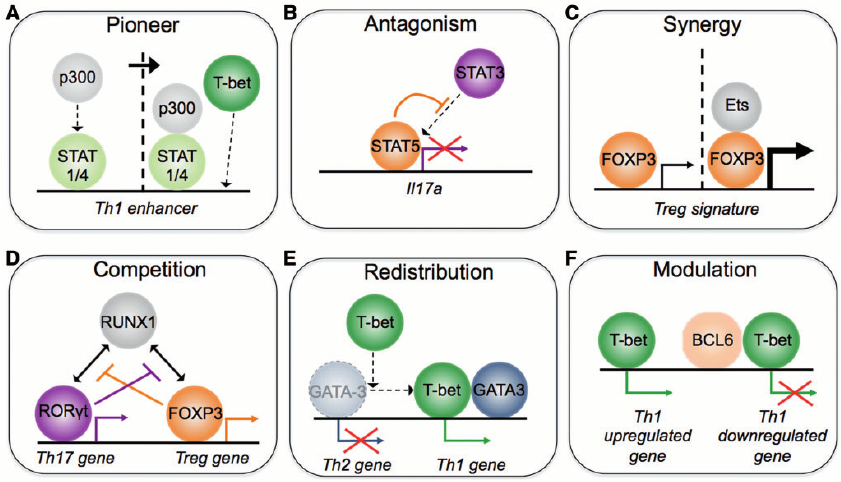 Transcription Factor-Interaction Prediction and Classification
Transcription Factor-Interaction Prediction and Classification
Participants:
Stefano Perna, Pietro Pinoli, Stefano Ceri, Wong Limsoon
Background
Transcriptional regulation is critical to the cellular processes of all
organisms. Regulatory mechanisms often involve more than one transcription
factor (TF) from different families, binding together and attaching to
the DNA as a single complex, but only a fraction of the regulation partners
of each transcription factor is currently known. It is thus of interest
to biologists to analyse data extracted from TF-DNA binding experiments
(e.g. ChIP-Seq) to infer the mechanisms that drive transcriptional
regulation.
In this project, we developed techniques for
predicting the physical interaction between transcription factors,
as well as for predicting the nature of their interactions (i.e.
co-operative, competitive, or others).
Achievements
- The TICA method and the associated TICA web server for predicting
TF-TF interactions. Its main novelty was the use of a form of
non-averaging statistics, viz. the size of the tail of the distance
distribution between nearest binding sites of the candidate pair at
the promoters of candidate target regulated genes in specific cell lines.
There was a good complementarity between the factors considered by TICA
and two competing methods (TACO and CENTDIST) such that a simple union
of the three’s predictions delivered more than 10% improvement in the
geometric mean of their individual recall and specificity.
- The NAUTICA method which employed information from protein-protein
interaction (PPI) networks to assign TF-TF interaction candidates to
one of three classes: competition, co-operation, and non-interaction.
NAUTICA worked well in separating co-operating from competing TFs,
which was of interest since there was no other computational method
that could make this distinction.
-
We demonstrated inconsistencies between two main sources of TF binding data,
Cistrome and ENCODE. We discovered that consistency would be improved 3-fold
by restricting Cistrome to high-intensity peaks (top 25%). Using the
intersection of Cistrome high-intensity and ENCODE as input,
TF-TF interaction prediction using e.g. TICA would improve significantly.
Selected Publications
- Stefano Perna, Arif Canakoglu, Pietro Pinoli, Stefano Ceri, Limsoon Wong.
Implementing a transcription factor interaction prediction system
using the GenoMetric Query Language.
Data Mining for Systems Biology: Methods and Protocols,
edited by Hiroshi Mamitsuka, Chapter 6, pages 63--81, Springer, July 2018.
- Stefano Perna, Pietro Pinoli, Stefano Ceri, Limsoon Wong.
TICA: Transcription interaction and coregulation analyser.
Genomics, Proteomics, & Bioinformatics,
16(5):342--353, October 2018.
PDF
- Stefano Perna, Pietro Pinoli, Stefano Ceri, Limsoon Wong.
NAUTICA: Classifying transcription factor interactions by
positional and protein-protein interaction information.
Biology Direct, 15:13, September 2020.
PDF
- Stefano Perna, Pietro Pinoli, Stefano Ceri, Limsoon Wong.
A comparative analysis of ENCODE and Cistrome
in the context of TF binding signal.
BMC Genomics, 25(Suppl 3):817, August 2024.
PDF
Dissertations
Acknowledgements
This project was supported in parts by
a Singapore Ministry of Education Tier-1 grant (MOE-T1-251RES1725 to WLS),
a European Research Council Advanced Grant (grant # 693174 to SC), and
a Kwan Im Thong Hood Cho Temple Chair Professorship (to WLS).
Last updated: 30/8/24, Limsoon Wong.
 Transcription Factor-Interaction Prediction and Classification
Transcription Factor-Interaction Prediction and Classification
 Transcription Factor-Interaction Prediction and Classification
Transcription Factor-Interaction Prediction and Classification